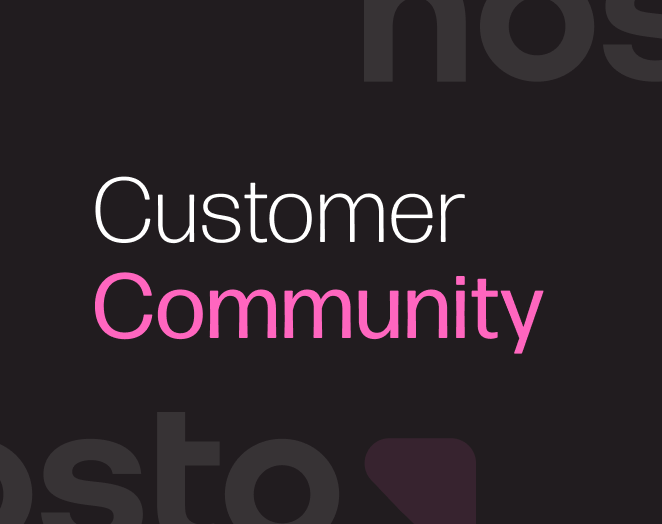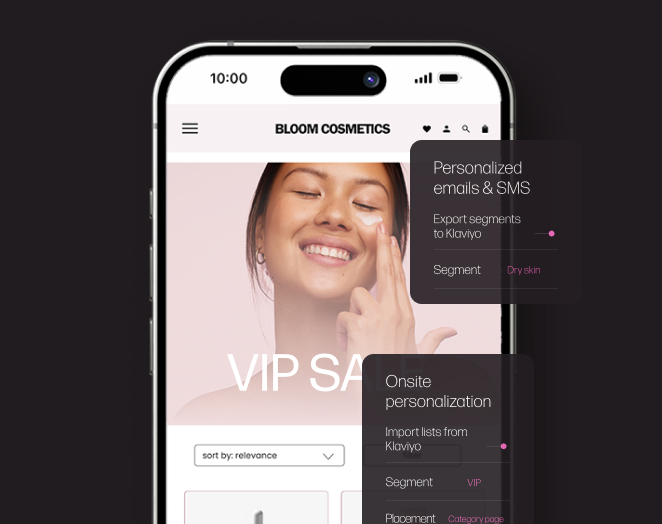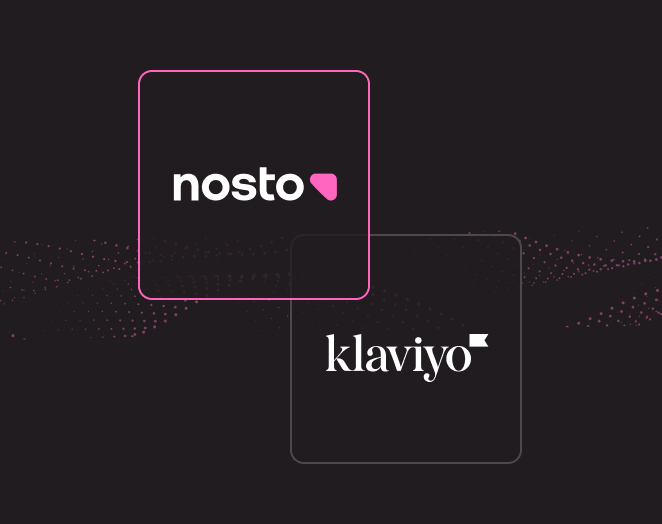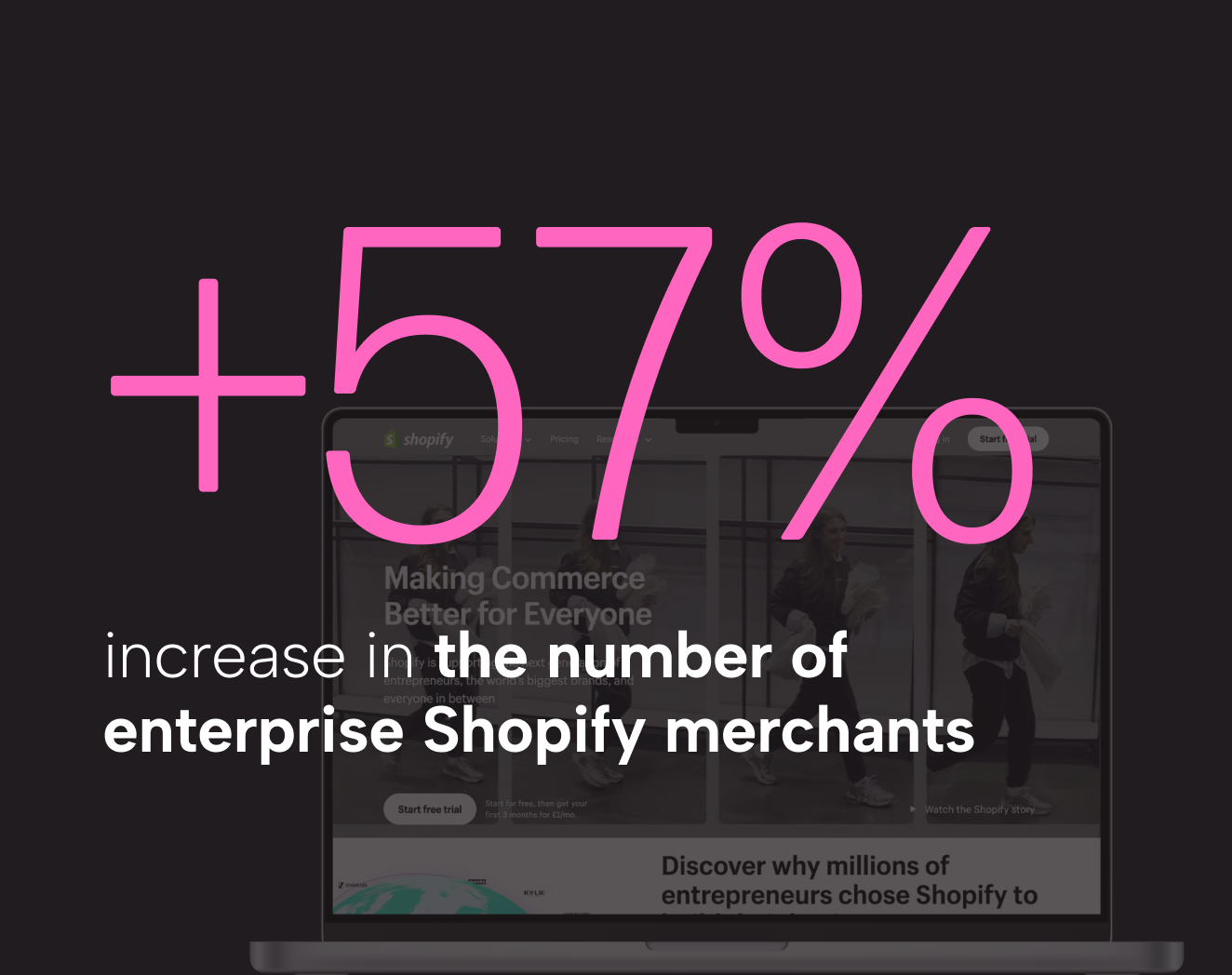Why it’s Time for Your Brand to Build a Community of Creators
What do platforms like Facebook, Instagram and TikTok all have in common? Their success comes from having a living, breathing, active community of creators generating content and engaging in conversations around the clock.
Of course, we all know these social media platforms are built for just that; sharing and socializing. But did you ever consider that your brand can develop a dedicated, engaged digital community in a similar way? We’ll talk you through how to do this and provide some tips below for how to build your brand’s own community of creators.
Why now is the time for your brand to build a community of creators
It’s human nature to seek out community. Community offers us that 1-to-1 human interaction we all crave, gives us inspiration and helps to motivate us. Most of us belong to more than one kind of community, whether that’s our family circle, friend group, a sports league, the companies we work for or even an online group or forum.
Increasingly, people are finding more niche communities online to engage with—ones that align with a specific interest they have, i.e. a local dog lovers group, a group discussing the best nontoxic beauty products, or a group interested in sustainable travel. These communities tend to be more highly engaged because of their passion in a specific topic where they feel their voice is heard.
With people’s interests being more nuanced than ever, that makes now a great time for your brand to be proactive and build a community of creators around your products and services that align with an untapped group of eager individuals.
Building a community of creators: the starting point
First off, there is no wrong way to bring together a community of creators. Whatever gets people banded together, talking about your products and generating content is a good thing. Typically, these are the ways that brands go about either discovering or creating a brand community:
1. Find an existing community that is already engaged in topics related to your product or service. For example, if you’re a sustainable outdoor gear brand, you might want to find a forum of people who are already discussing sustainability in outdoor apparel or similar topics. This opens the door for people who are already engaged and listening to become potential customers and even passionate content creators for your business.
2. Organize and engage an existing brand fanbase. Some brands are lucky enough to already have people out there who are creating great content around their products or asking how they can get involved. If this is true for your brand, it’s a good idea to capitalize on that enthusiasm by proactively bringing together those individuals and inventing fun ways for them to create content for you. For example, sending out community newsletters and offering reward incentives to boost engagement and sales.
3. Don’t have a semblance of a brand community yet? No problem. Starting from the beginning may not put you as ahead as the previous two methods, but it is still possible. You could begin by creating a framework to support a community of creators for your brand and start inviting current customers to be part of it. From there, incentivize those people to tell their own networks about it. You can also begin to promote this special opportunity for people to be part of your brand through owned channels like email, website, blog and social media.
Best practices for cultivating a community of creators
We’ve worked with several brands that have built a community of creators around their products and services. From that experience, here are some best practices we have to offer for other brands interested in this strategy:
Lead by values
People in groups often share the same values. If a group of people comes together around fashion, those values might be related to creativity and self-expression through clothing. For groups interested in outdoor products, those values might be the importance of exercise, spending time outside and communing with nature.
Try to identify the values at the core of not just what you want your brand to represent, but also the values that your audience and customers relate to most. If you’re not sure what those are, try sending out a general survey or even ask those who have engaged with or purchased from your brand directly. You could even send out a prompt on your most active media channel asking people for their comments (which also happens to be a great way to cultivate community).
Put your customer at the heart of your brand
Something that’s hard for brands to remember is that it should be the people, not the products, at the center of your brand. A product should help improve the lives of your customers whether that’s providing them with a pleasant experience, filling an important gap to help them get where they want to be or contributing to their overall wellbeing.
Spend time thinking about how you can ensure you’re not only serving your community, but representing them as well by giving them a voice in your brand, sharing the user-generated content (UGC) they create.
Tap into existing creator markets
Like we mentioned above, it can help when there are already groups of people out there engaging with the topics and products that align closely with your brand. Spend some time researching and locating where these people interact. For example, a Reddit forum, an email newsletter you could partner with, a Facebook or LinkedIn group or even events (whether live or virtual). Get involved in those conversations and invite people to join your community of creators.
Tell your community what content you want them to create
Of course, one of the main objectives in nurturing a community of creators is to get them to create content for you. Proactively getting your community members to create UGC not only showcases to others how fun it is to be involved with your brand, but it can also provide valuable social proof via images and videos of how your product works in the real world.
“[Our] goal is to humanize our brands by building communities. We want new and well-seasoned riders to feel like they belong with us. We want to showcase more of the content from our actual customers to show the beautiful diversity of our riders and so other people see that and feel like they could be having an experience like that too. UGC inspires people to do things differently and that’s what we want to encourage.” – Bellanis Pereira, Global Asset Factory & Social Media Lead at BRP
You don’t have to wait for people in your community to create content for you. Send out an email or post something on social media telling people about a fun campaign they can be part of and ask them to create content around it. Or, promote the feeling of exclusivity by giving only those in your community a free sample of a new product that hasn’t launched yet in exchange for them uploading their own fun content about that product. You could even then use this material for the product launch; tagging the individuals with the best UGC.
Stackla’s feature, Organic Influencers, is made for this type of communication. Your team can draft up a ‘Creative Brief’ and send it out to your community list to ask people to generate their own content. Don’t be afraid to get specific in your ask to acquire the visuals you most want people to create and others to see from your brand.
Don’t keep it to just one group or category
This is especially true if you happen to be a larger brand with several product ranges or sub-brands. Remember that the more niche the community, the higher levels of engagement you’re likely to see.
You don’t have to have only one dedicated community of creators—you can have many. If you’re a beauty company with several product types, you could create a community around skincare and another around makeup. This helps you to be more personalized in your approach to cultivating your brand communities. It will also encourage people in those groups to come up with content for those specific topics and products.
Encourage your creators to share and get creative!
Building trust and relationships are what community is all about. Encourage your followers to share an experience or story of theirs and how that ties in with your brand. Ask them to share personal stories on how a certain item added value to their life or why they chose to be interested in a particular hobby. These genuine stories will resonate with and engage other people in a meaningful way.
One of our customers, Michael Hill, an international jewelry brand, shared the touching story of two sets of couples that had to postpone their weddings because of the COVID-19 pandemic. By showing real photos of the private backyard ceremonies their customers had, it helped forge more personal connections with their audiences.
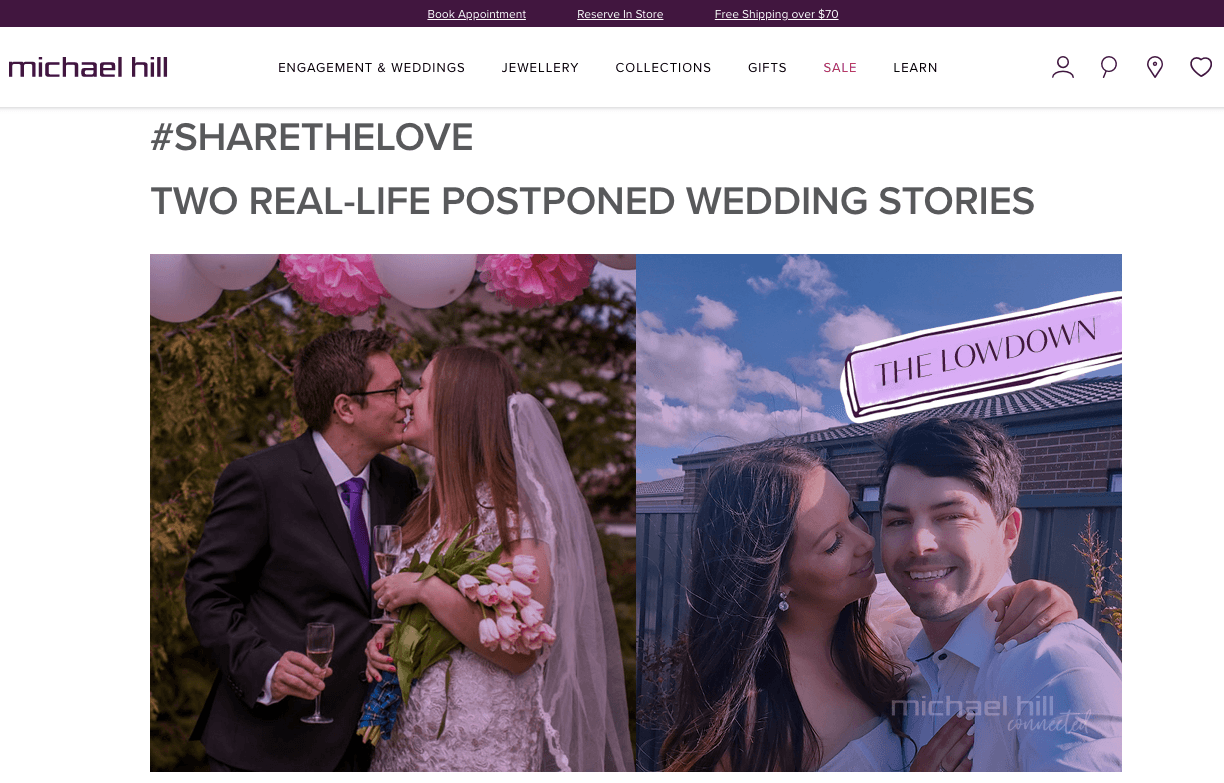
Don’t just get your creators to make content for you, but also be clear in letting them know that their personal stories create value for other community members. Finally, find creative ways to publish those stories out for the rest of your audience to see—whether that be in community newsletters, in your ads, on your Instagram Stories or on your blog.
Examples of brand-led creator communities
Here are some more examples of how brands we’ve worked with cultivated a community of creators:
Little Bellies
Little Bellies is a highly popular and fast-growing baby and kids food brand with a small budget. They have several different product ranges, all of which required unique content that the brand wasn’t able to generate 100 percent on its own.
They relied on their excited customers (i.e. parents) to generate lots of adorable content for Little Bellies’ ranges—using Stackla’s Organic Influencers tool to discover, connect with and motivate these happy customers to become their own dedicated community of creators.
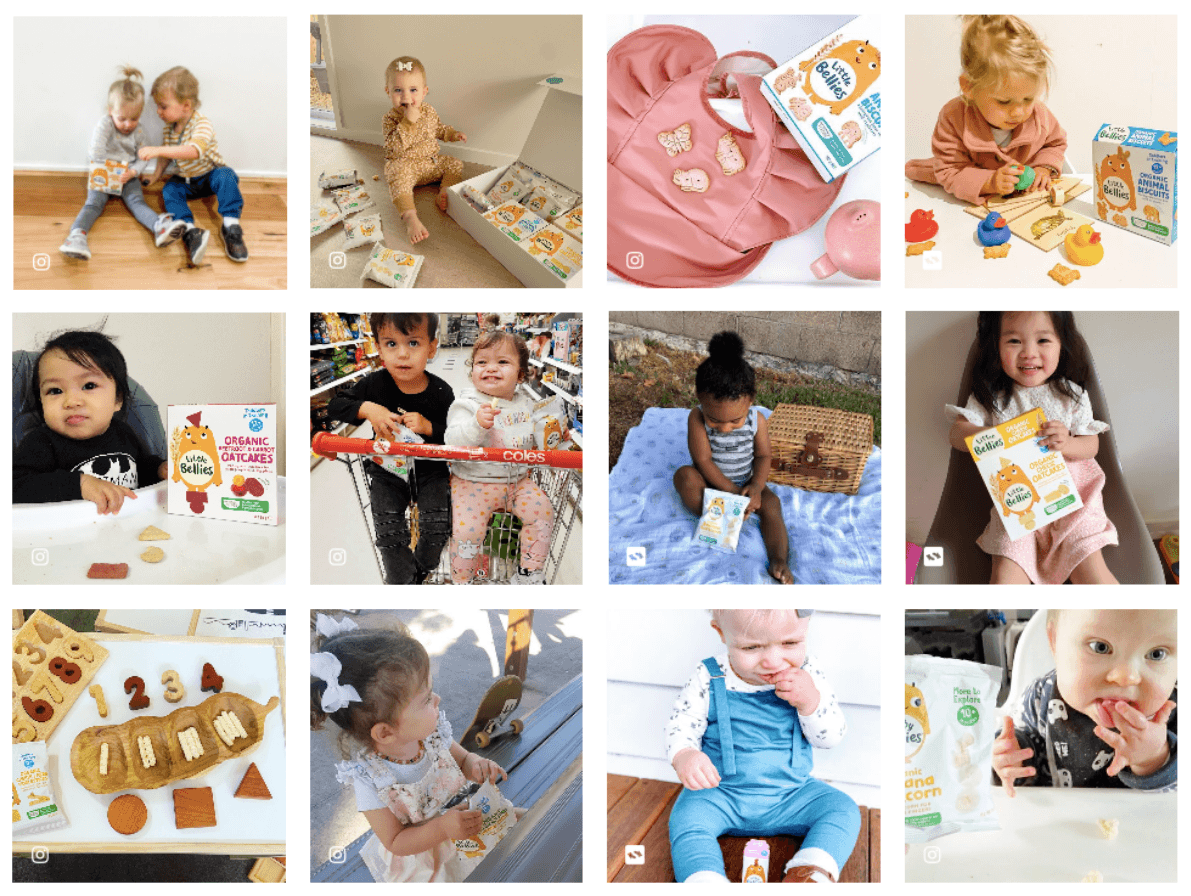
Georgie Scott, Marketing Manager for DKSH Grocery Connect, said “UGC works well for us because parents are really discerning about food products for their children. The fact that we are able to access and publish content from real parents, mostly mothers, who are recommending our products to other mothers makes this strategy quite powerful.”
Bringing together their community of enthusiastic parents helped Little Bellies create tons of authentic UGC and provide valuable social proof.
LUSH Cosmetics
LUSH Cosmetics’ shoppers are not your typical customers. Their brand fans, whom they call “Lushies,” are loyal customers who connect with the brand not just because of their products, but also for their commitment to ethical and sustainable campaigns.
LUSH relied on this already engaged community to share the content their customers were creating across their social channels and web pages. When they did this, they nurtured a personalized experience for those individual content creators, but also grew their brand through the authentic voices that were already giving them attention online.
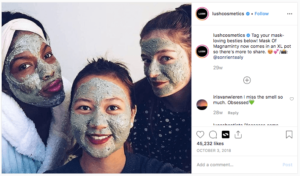
Sabine Schwirtz, former Community Manager at LUSH Cosmetics North America, said in a case study, “I think many marketers who have been in the industry for a long time are worried about maintaining the voice of the brand,” she said. “But, the voice of the brand is not always the same as the voice of the customers. We’re moving closer to times where a brand’s identity is the same as their customers’ identity.”
Canon
Canon was the perfect brand use case to launch a community of creators. After all, their products are the very tools in which their photographer customers create high-quality images and videos.
Canon has a special ‘Stories’ page on their website showcasing the amazing ways their customers are using their products to create compelling images and unique stories around the world. The page is meant to serve as inspiration for their audience and other potential customers.
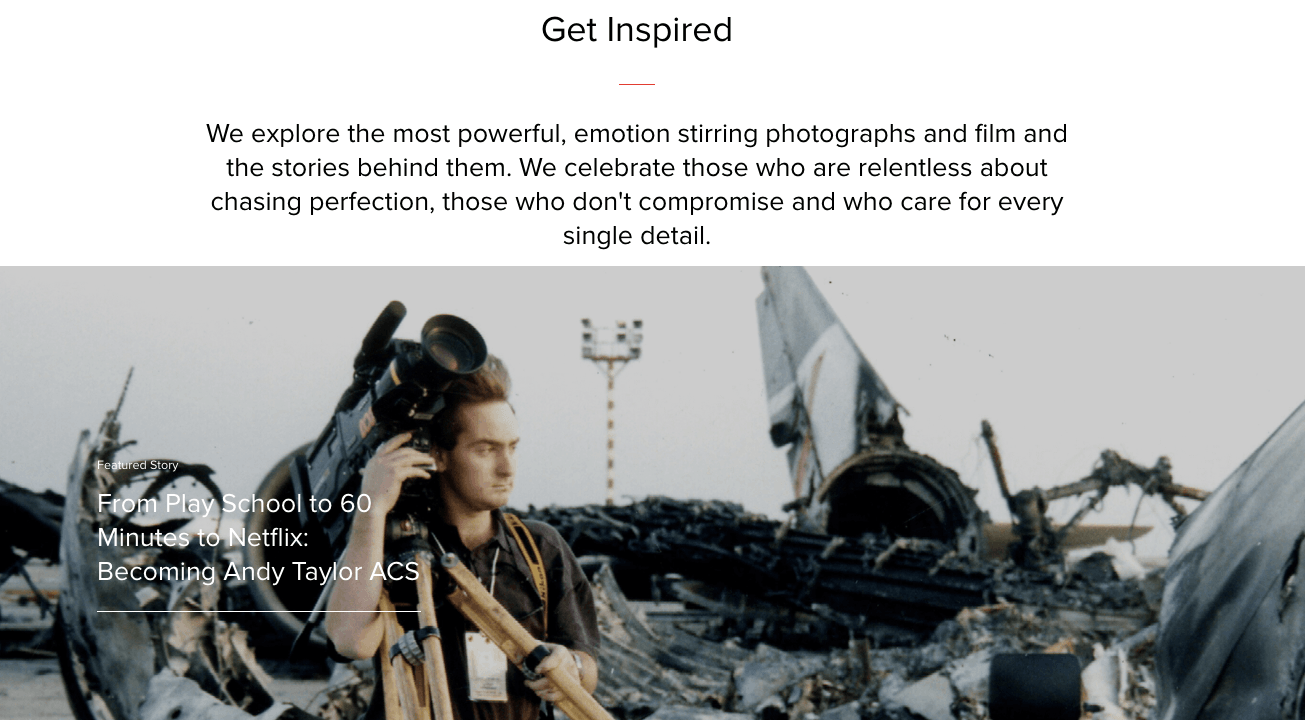
Canon has also dedicated 80 percent of their content on their Canon Australia Instagram channel to display the varied and diverse UGC from their customers.
Conclusion
If you think now is the time to begin building a community of creators from scratch, or bring together your already-existing engaged fanbase, we’d love to help you in that endeavor.
We built our Organic Influencers tool for the specific purpose of making it easier than ever for brands to connect with their customers and collect the best content from their creator communities. Fill out a demo form below and we’ll walk you through how Organic Influencers can help you get the engagement and conversions you’re seeking by helping you be proactive in your UGC strategy.


